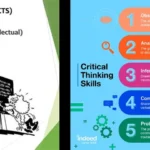What Are the 7 Pillars of Resilience? Unveiling the Secrets to Personal Strength and Success:Are you feeling like life is throwing you curveballs left and right? Do you wish you had the strength to bounce back from adversity and keep moving forward? Well, my resilient friend, you’ve come to the right place. In this blog post, we’re going to dive deep into the world of resilience and uncover the 7 pillars that will help you build your mental fortitude. From understanding the essence of resilience to exploring the 4 R’s and the 6 dimensions, we’ll leave no stone unturned. So grab a cup of tea, sit back, and get ready to weave the tapestry of resilience. Let’s get started with the 7 pillars of resilience and discover the secrets to bouncing back stronger than ever before.
Understanding the Essence of Resilience
Resilience is a multifaceted concept, often personified by individuals who rise above adversity with grace and strength. But what constitutes resilience? Is it an innate trait, or can it be cultivated and strengthened like a muscle? The answer lies in understanding the various interpretations and models of resilience, each presenting a unique set of pillars, dimensions, or principles that underpin this invaluable human quality.
The 7 Pillars of Resilience: A Closer Look
Acceptance: Embracing the Unchangeable
One of the foundational pillars of resilience is acceptance. It requires an understanding that not every situation is within our control. Acceptance isn’t about defeat but about recognizing the limits of our influence and channeling our energy towards areas where we can make a difference.
Optimism: Seeing Potential in Challenges
Optimism is not just about expecting positive outcomes; it’s about seeing the potential for growth in our most challenging moments. It involves a shift in perspective—viewing difficulties as opportunities to learn and develop rather than insurmountable obstacles.
Stopping the Victim Mentality: Empowerment Over Circumstances
To stop being a victim means to refuse to be defined by circumstances. Resilient individuals don’t allow themselves to be passively molded by external events; they actively shape their response and attitude towards those events.
Solution-Oriented Approach: Focusing on Answers
A solution-oriented approach is characteristic of a resilient mindset. It involves a proactive stance towards problem-solving, prioritizing actionable steps over dwelling on problems.
Taking Responsibility: Owning Your Role
Taking responsibility is about acknowledging one’s part in both the problem and the solution. It’s a commitment to personal accountability and an essential aspect of resilience.
Social Networks: The Strength of Community
The importance of social networks cannot be overstated. These are our support systems, the relationships that provide assistance, comfort, and advice during times of stress.
Future Planning: Anticipating and Preparing
Future planning is the strategic aspect of resilience. It involves preparing for potential challenges and having a vision that guides actions and decisions.
The 7 C’s of Resilience: Building Blocks for Personal Development
Competence and Confidence: Skills and Self-Belief
Competence refers to having the necessary skills to face challenges effectively, while confidence is the belief in one’s abilities. Together, they form a powerful duo that fuels resilience.
Connection: The Power of Relationships
Connection speaks to the strength we draw from our relationships with others. It’s about fostering strong, positive ties that provide emotional support and aid.
Character: Values and Integrity
Character involves a set of values and integrity. It’s about knowing right from wrong and having the moral fortitude to act accordingly, even in adversity.
Contribution: Making a Difference
Contribution is the act of making a positive impact on others or the world. It gives a sense of purpose and fulfillment that strengthens resilience.
Coping: Managing Stress Effectively
Coping mechanisms are the strategies we use to deal with stress and adversity. Effective coping is adaptive and helps to mitigate the negative impact of stress.
Control: Mastery Over Your Response
Control in this context is about the ability to manage one’s responses to external events. It’s the realization that while we may not control events, we can control our reactions to them.
The 4 R’s of Resilience: A Systemic Perspective
Robustness: Strength to Withstand
Robustness in resilience is akin to the durability of a structure. It’s the inherent strength that allows one to withstand pressures without collapsing.
Redundancy: Backup Systems
Redundancy refers to having backup systems or alternatives in place. It’s the idea of having multiple pathways or options to ensure continuity when one path is blocked.
Rapidity: Quick Recovery
Rapidity is about the speed of recovery following a setback. It’s the ability to bounce back swiftly and get back on track.
Resourcefulness: Creative Problem-Solving
Resourcefulness is the ability to find quick and clever ways to overcome difficulties. It’s about thinking outside the box and using what’s available to navigate challenges.
The 5 Pillars of Everyday Resilience: Daily Practices for Strength
Self-Awareness: Knowing Yourself
Self-awareness is the understanding of your own emotions, strengths, weaknesses, and drives. It’s a critical component of emotional intelligence and resilience.
Mindfulness: Living in the Moment
Mindfulness is the practice of being present and fully engaged with the current moment. It allows for a clearer perspective and helps buffer against the stress of adversity.
Self-Care: Nurturing Your Needs
Self-care is the act of taking care of one’s physical, emotional, and mental health. It’s a vital practice that sustains resilience by ensuring we have the energy and well-being to face challenges.
Positive Relationships: Cultivating Supportive Bonds
Positive relationships are those that provide support, understanding, and encouragement. They are a source of strength and comfort during tough times.
Purpose: Having a Clear Vision
Purpose gives life meaning and direction. It’s what motivates us to persevere through adversity and strive towards goals.
The 6 Dimensions of Resilience: Measuring Personal Fortitude
Vision: Clarity of Purpose
Vision is the ability to see the big picture and have a clear sense of direction. It’s about setting goals and knowing what you’re working towards.
Composure: Emotional Regulation
Composure is maintaining emotional stability and calmness under pressure. It’s the capability to manage one’s emotions effectively in the face of stress.
Tenacity: Determination to Persist
Tenacity is the determination to keep going despite setbacks. It’s the gritty persistence that fuels continued effort after failure.
Reasoning: Logical Problem-Solving
Reasoning is the logical and analytical ability to solve problems. It’s about approaching challenges with a clear, rational mindset.
Collaboration: Teaming Up for Success
Collaboration is working together with others to achieve a common goal. It’s recognizing that sometimes, resilience is a team effort.
Health: Physical and Mental Well-Being
Health, both physical and mental, is the foundation upon which resilience is built. Without it, our capacity to cope with and recover from adversity is compromised.
Seligman’s 3 Ps Model of Resilience: Emotional Reactions to Adversity
Personalization: Ownership of Experience
Personalization refers to how we attribute events to ourselves. A resilient person understands what’s within their responsibility and what’s not, avoiding unnecessary self-blame.
Pervasiveness: Scope of Impact
Pervasiveness pertains to the extent we believe an adverse event affects other areas of our life. Resilient individuals isolate incidents to prevent a single setback from overwhelming other life aspects.
Permanence: Duration of Aftereffects
Permanence is the belief in how long the effects of an event will last. Those who are resilient tend to see the effects of adverse events as temporary rather than permanent.
Conclusion: Weaving the Tapestry of Resilience
Resilience is not a singular concept but a tapestry woven from various principles, pillars, and dimensions. It’s about acceptance and optimism, taking responsibility, and fostering positive relationships. It’s about being solution-oriented, planning for the future, and nurturing a robust support network. By understanding and integrating these aspects into our lives, we can build a resilience that is both deep and enduring, enabling us to navigate life’s challenges with grace and strength.
Whether it’s the 7 pillars, the 4 R’s, the 5 pillars of everyday resilience, the 6 dimensions, or Seligman’s 3 Ps, each model offers valuable insights into how we can cultivate resilience. By taking these principles to heart and applying them to our daily lives, we empower ourselves to rise above adversity and thrive in the face of life’s inevitable challenges.
FAQ & Common Questions about The 7 Pillars of Resilience
Q: What are the 4 R’s of resilience?
A: The 4 R’s of resilience are Robustness, Redundancy, Rapidity, and Resourcefulness. These capabilities help a system absorb and recover from disturbances.
Q: What are the 5 pillars of everyday resilience?
A: The 5 pillars of everyday resilience are self-awareness, mindfulness, self-care, positive relationships, and purpose. Strengthening these pillars can enhance our resilience.
Q: What are the 6 dimensions of resilience?
A: The 6 dimensions of resilience are vision, composure, tenacity, reasoning, collaboration, and health. These factors measure a person’s resilience and its underlying reasons.
Q: What are the 3 Ps model of resilience?
A: The 3 Ps model of resilience, according to Seligman, includes personalization, pervasiveness, and permanence. These refer to emotional reactions we have to adversity.
Q: What are the 5 principles of resilience?
A: The 5 principles of resilience, as outlined by Taryn Marie, are vulnerability, productive perseverance, connection, gratiosity (gratitude and generosity), and possibility. Resilient individuals actively face challenges and are not born but made.





